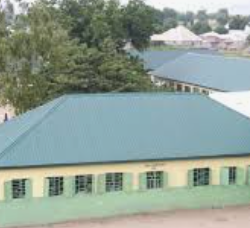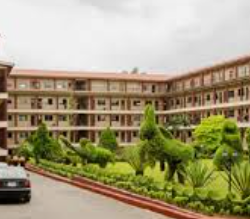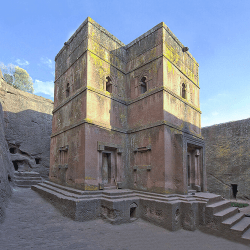Ethiopia, covering an area of 114 million square kilometers, is as large as France and Spain combined and five times the size of the UK. This vast nation in the Horn of Africa is renowned for its rugged mountains, fertile valleys, and expansive deserts. As one of the world’s oldest civilizations, Ethiopia plays a crucial role in African trade, politics, and culture. Its proximity to the Middle East and Europe enhances its global importance, making it a gateway for international trade.
Geographical Features of Ethiopia
Size and Area Comparison
Ethiopia’s diverse topography spans highlands, lowlands, and vast plains. The country’s size is impressive, comparable to several European nations combined.
The Abyssinian Highlands
Stretching from the north down to the center, the Abyssinian Highlands dominate Ethiopia’s landscape. These highlands influence the climate, providing fertile lands for agriculture.
The Rift Valley and Lakes
South of Addis Ababa, Ethiopia is characterized by the Great Rift Valley, a geological wonder housing numerous lakes, hot springs, and unique wildlife.
Neighboring Countries and Borders
Ethiopia shares borders with:
- Sudan (west)
- Somalia and Djibouti (east)
- Eritrea (north)
- Kenya (south)
This strategic location enhances Ethiopia’s role in regional politics and trade.
Strategic Location and Trade Importance
Proximity to the Middle East and Europe
Ethiopia’s closeness to Europe, Asia, and the Arabian Peninsula strengthens its economic and geopolitical importance.
Major Ports and Trade Access
Despite being a landlocked country, Ethiopia utilizes the Djibouti port for global trade, making it an economic powerhouse in East Africa.
Ethiopia’s Role in Regional Trade
The country is a leader in African trade agreements and plays a pivotal role in the African Continental Free Trade Area (AfCFTA).
Climate and Natural Resources
Diverse Climatic Zones
Ethiopia has three main climate regions:
- Tropical savanna in the lowlands
- Cool highland climate in central Ethiopia
- Arid desert in the east
Key Natural Resources
Ethiopia is rich in gold, platinum, natural gas, and fertile soil, making agriculture and mining key sectors in the economy.
Biodiversity and Wildlife
Unique Flora and Fauna
Ethiopia boasts endemic species such as the Ethiopian wolf, Gelada baboon, and Walia ibex.
National Parks and Conservation Efforts
Notable parks include:
- Bale Mountains National Park
- Simien Mountains National Park
- Omo National Park
These parks support conservation and eco-tourism.
Ethiopia’s Economy and Agriculture
Major Industries and Exports
Ethiopia’s economy relies on:
- Coffee (biggest export)
- Textile and manufacturing industries
- Livestock farming
Growth of the Industrial Sector
Infrastructure projects like hydroelectric dams and railways are transforming Ethiopia into an industrial hub.
Cultural and Historical Significance
Ancient Civilization and Heritage
Ethiopia is home to the Aksumite Empire, one of the greatest African civilizations.
Lalibela Rock-Hewn Churches
These UNESCO-listed medieval churches, carved from rock, showcase Ethiopia’s Christian heritage.
UNESCO World Heritage Sites
Sites like Fasil Ghebbi and Harar Jugol highlight Ethiopia’s historical richness.
Ethiopian Society and Ethnic Diversity
Major Ethnic Groups
Ethiopia has over 80 ethnic groups, the largest being:
- Oromo
- Amhara
- Tigray
Languages Spoken
Amharic is the official language, but many other languages are spoken.
Festivals and Traditions
- Timkat (Epiphany)
- Meskel (Finding of the True Cross)
- Enkutatash (Ethiopian New Year)
Tourism in Ethiopia
Popular Tourist Attractions
Ethiopia’s must-visit sites include:
- Simien Mountains
- Blue Nile Falls
- Lake Tana Monasteries
Adventure Tourism and Eco-Tourism
Hiking, bird-watching, and cultural tours attract visitors from across the globe.
Modern Infrastructure and Urbanization
Growth of Addis Ababa
Addis Ababa is a growing business and diplomatic hub, housing the African Union Headquarters.
Transportation and Communication Networks
Ethiopia has one of Africa’s fastest-growing transport sectors, with expanding railways and highways.
Challenges and Future Prospects
Economic and Political Challenges
Ethiopia faces hurdles like inflation, political tensions, and climate change.
Sustainable Development Goals
The government is focused on economic diversification, infrastructure, and green energy to ensure sustainable growth.

Ethiopia’s rich history, strategic location, and economic potential make it one of Africa’s most influential nations. With its unique blend of natural beauty, cultural heritage, and economic ambition, Ethiopia is poised for a bright future.
- Why is Ethiopia historically significant?
Ethiopia is home to one of the world’s oldest civilizations, including the Aksumite Empire and ancient Christian sites. - What is Ethiopia’s main export?
Ethiopia’s largest export is coffee, followed by gold and textiles. - Is Ethiopia a landlocked country?
Yes, Ethiopia is landlocked but uses Djibouti’s port for trade. - What makes Ethiopia’s geography unique?
Ethiopia has highlands, deserts, and the Great Rift Valley, offering diverse landscapes. - What is Ethiopia’s capital?
The capital city is Addis Ababa.









